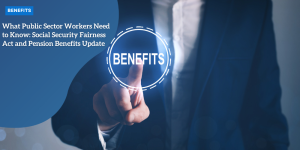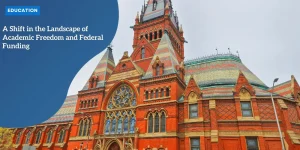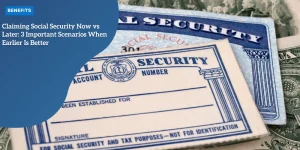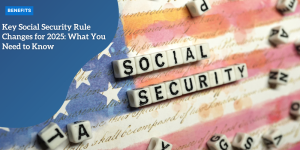Federal Benefits at Risk for 5.3 Million Defaulted Student Loan Borrowers: What Americans Need to Know

Anúncios
As Loan Collections Resume, Millions Face Financial Consequences Amid Government Crackdown
In a significant and controversial shift, the U.S. Department of Education announced that 5.3 million student loan borrowers in default will begin receiving warnings that their federal benefits could be withheld, starting as early as June 2025.
The move comes as the Trump administration resumes aggressive collection efforts following the pandemic-era loan payment pauses that began in 2020.
The Department of Education revealed on May 5 that these borrowers—who haven’t made payments in over nine months—are at risk of losing access to key federal benefits, including Social Security offsets, tax refunds, and other financial supports.
Approximately 195,000 borrowers received their 30-day warning on the same day of the announcement, with more to follow throughout the summer.
Anúncios
This development marks a turning point in the nation’s ongoing debate over student loan debt, forgiveness, and borrower responsibility.
As the political rhetoric heats up and collection notices go out, millions of Americans are scrambling to understand what’s happening, what it means for their finances, and how they can avoid or escape default.
Understanding the Timeline: How Did We Get Here?
Student loan payments were first paused in March 2020 under then-President Donald Trump due to the economic fallout from the COVID-19 pandemic.
The pause was extended multiple times, including under the Biden administration. However, when Trump returned to office in January 2025, his Department of Education shifted gears.
On May 5, 2025, the administration officially resumed active collections on defaulted federal student loans.
Anúncios
According to recent data, only 38% of all student loan borrowers are up to date on payments, suggesting that many Americans may face hardship or uncertainty as they attempt to re-engage with the repayment system.
In an April social media post, Secretary of Education Linda McMahon stated firmly:
“There’s no such thing as forgiveness—just shifting the payment burden from one party to another.
We will not force American taxpayers to take on the debts that are not theirs.”
The message was clear: the administration will hold borrowers accountable and enforce the repayment process—defaulted or not.

What Is a Defaulted Student Loan?
A student loan enters default when a borrower fails to make a payment for 270 consecutive days, or roughly nine months.
Once a loan is in default, it triggers a series of legal and financial consequences that can include:
- 💵Damage to credit score
- 💵Garnishment of wages
- 💵Seizure of federal tax refunds
- 💵Offsetting of Social Security benefits
- 💵Ineligibility for new federal student aid
- 💵Debt collection through third-party agencies
The default designation indicates that a borrower has not fulfilled the loan agreement and is no longer in good standing with the federal loan program.
For many borrowers, the reality of default is overwhelming and confusing, especially after several years of pandemic-related policy shifts.
Why Benefits Are Being Withheld—and What That Means
According to the Department of Education, the government is reinstating Treasury Offset Program (TOP) activities.
This means that certain federal benefits can be legally reduced or withheld to collect on defaulted student loans. For many borrowers, these offsets may affect:
- 💵Federal income tax refunds
- 💵Social Security benefits
- 💵Wages (in cases involving federal employment)
- 💵Other federal payments, such as military retirement or disability benefits
The first set of benefits to be affected will be issued in early June 2025, with borrowers receiving 30-day advance notices before any action is taken.
This policy shift has alarmed many, particularly low-income or retired Americans who rely on benefits as their primary source of income.
Critics say the timing—just as inflation continues to bite and economic recovery remains uneven—could make life harder for already vulnerable populations.
Expert Warnings: ‘Very Challenging’ Times Ahead for Borrowers
Financial aid experts are warning of tough times ahead.
Rob Moore, the Director of Financial Aid at Missouri State University, informed USA TODAY that borrowers are facing difficulties in understanding their accounts.
Long wait times for calls, frequent disconnections, and unclear instructions have become commonplace.
“A lot of these folks went five years without making payments.
Now they’re being asked to restart with little warning or support,” Moore said.
“The stress, anxiety, and frustration are understandable—and it’s about to get worse as punitive actions begin.”
Moore also expressed concern about the infrastructure of the loan system, noting that borrowers often wait multiple days just to reach a loan servicer, making resolution difficult even for those trying to comply.
How to Check If Your Loan Is in Default
If you’re unsure whether your loan is in default, you can check your status quickly by logging into your account at studentaid.gov. After signing in with your FSA ID, your dashboard will display any loans currently in default.
You can also reach out to the Federal Student Aid Information Center at 1-800-433-3243 for assistance.
Knowing your status is the first step toward either preventing further action or beginning the process of recovery.
How to Get Out of Default: Two Main Options
While paying off a loan in full immediately is the most direct way to clear a default, this is not realistic for most borrowers.
Thankfully, the Department of Education offers two structured programs to help borrowers return to good standing:
1. Loan Rehabilitation
This program allows borrowers to:
- 💵Agree to make nine affordable monthly payments
- 💵Complete the payments within 10 consecutive months
- 💵Have the default status removed from their credit report upon completion
Loan rehabilitation is often recommended because it cleans up your credit history.
However, it can take nearly a year to complete and can only be used once per loan.
2. Loan Consolidation
Consolidation involves:
- 💵Combining defaulted loans into a new federal consolidation loan
- 💵Agreeing to make three voluntary monthly payments before consolidation (in most cases)
- 💵Selecting a repayment plan that aligns with your income.
Loan consolidation is faster than rehabilitation, but any interest accrued on previous loans will be added to the new consolidated balance.
This can increase your total debt over time.
What Borrowers Should Do Now
If you’re among the millions at risk of losing benefits due to a defaulted student loan, here’s what you need to do immediately:
- 💵Log into studentaid.gov to check your loan status
- 💵Please update your contact information to ensure that you receive all notifications.
- 💵Review your repayment options—including rehabilitation and consolidation
- 💵Contact your loan servicer for customized support and guidance.
- 💵Consider talking to a nonprofit financial counselor who specializes in student loan issues
The worst course of action is inaction.
Delaying only increases the risk of financial hardship, collections, and benefit garnishment.
The Bigger Picture: A National Crisis in the Making?
The federal government’s move to reinstate punitive measures on defaulted loans comes at a time when student debt in America exceeds $1.7 trillion.
With only 38% of borrowers caught up, the scope of the issue is vast.
Many Americans are still recovering from pandemic job losses, housing instability, and rising living costs.
For those juggling multiple obligations, the resumption of collections may push them further into financial distress.
Critics argue that the current system is unsustainable, and without deeper reform—such as income-driven repayment overhauls or broader forgiveness—loan defaults and benefit garnishments will only grow.
Conclusion: Accountability vs. Empathy in America’s Student Debt Era
The return of student loan collections, particularly against borrowers in default, marks a shift in tone and policy.
The current administration’s message is clear: borrowers must resume payments or face consequences.
But the real-life fallout of this policy will be felt in homes across the country—by seniors losing part of their Social Security, by single parents missing a tax refund, and by working-class Americans who can’t get answers from overwhelmed loan servicers.
For now, borrowers should focus on what they can control: checking their loan status, exploring rehabilitation or consolidation, and staying informed about their rights.
The student loan crisis is far from over—but informed action is still the most powerful tool borrowers have.






